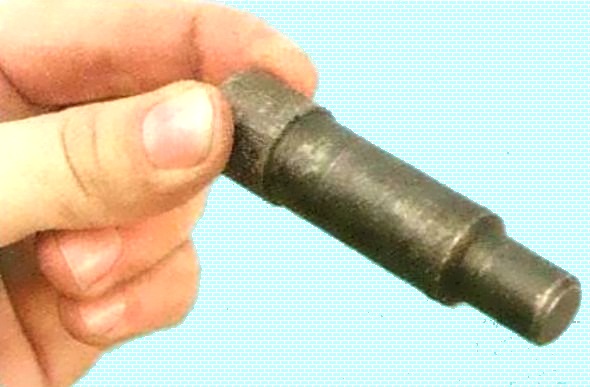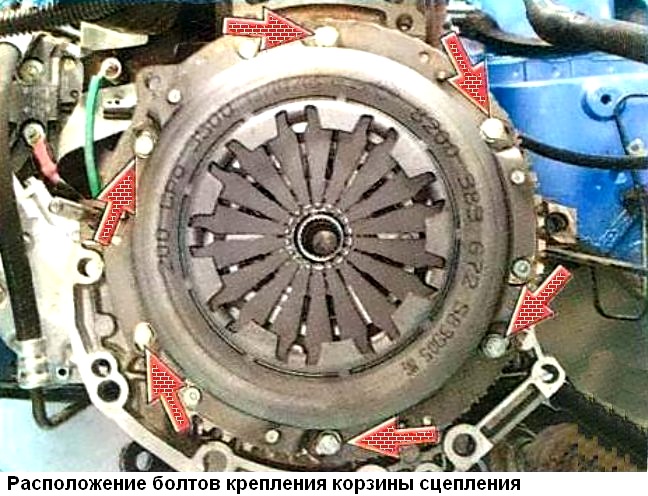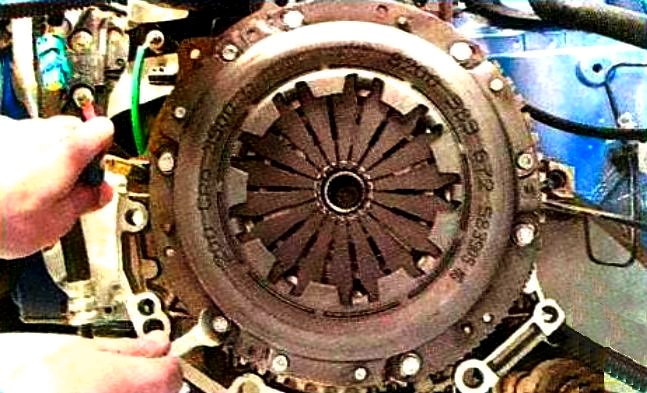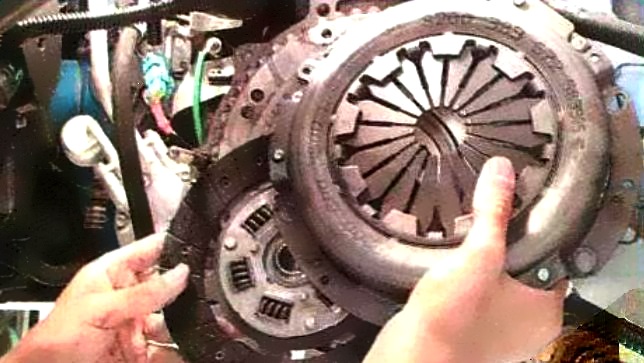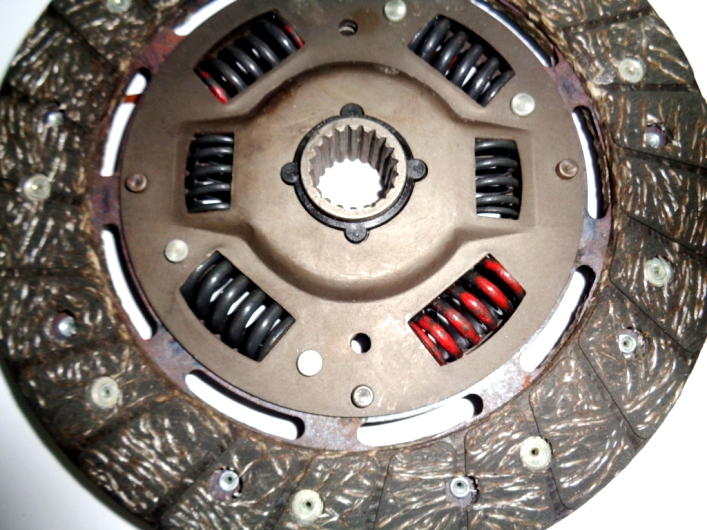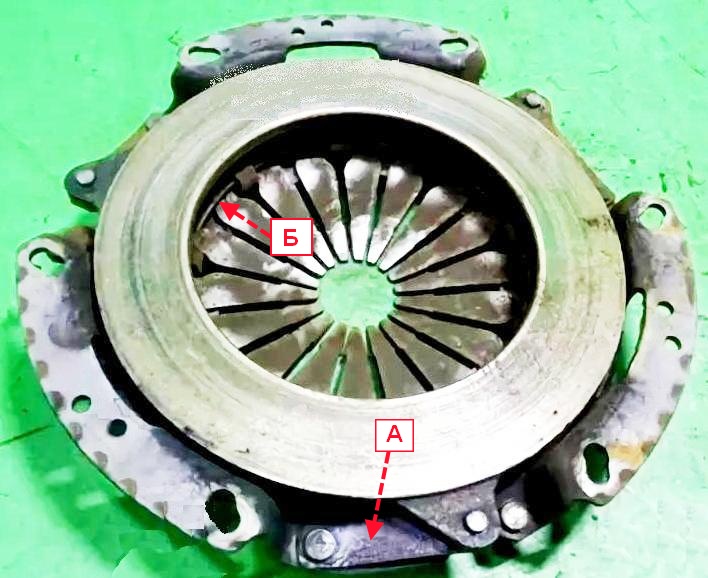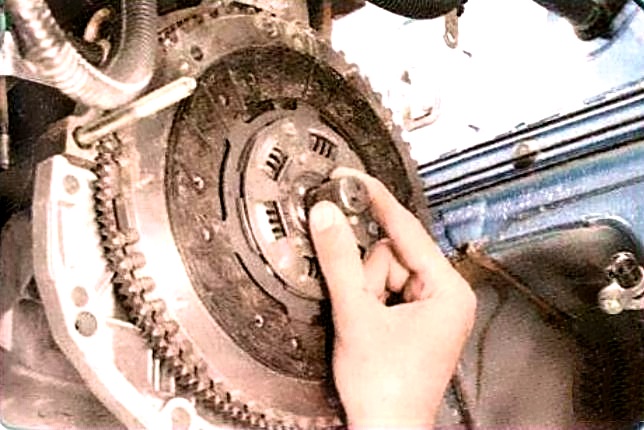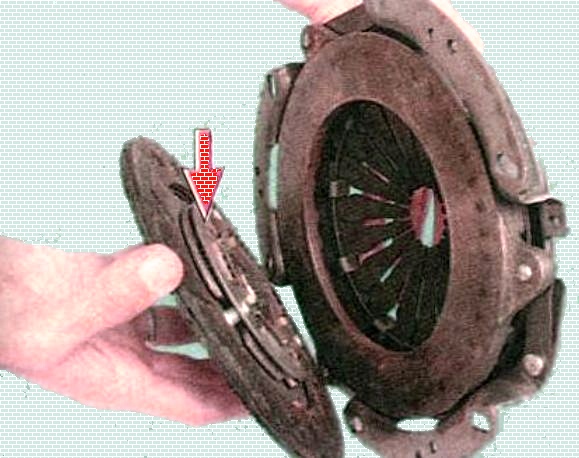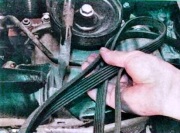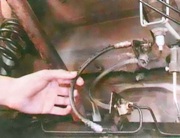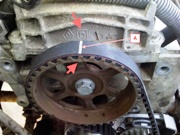The main malfunctions that require removal and disassembly of the clutch are as follows:
- - increased (compared to the usual) noise when the clutch is turned on and off;
- - jerks during clutch operation;
- - incomplete engagement of the clutch ("clutch slips");
- - incomplete clutch disengagement (clutch "leads").
If the clutch fails, we recommend replacing all its elements at the same time (driven and driving discs, clutch release bearing), since the work of replacing the clutch is laborious, and the life of undamaged clutch elements has already been reduced and, if they are installed again, it may be necessary repeated replacement of the clutch after a relatively short run.
You will need: key "11" (more convenient socket head), screwdriver,
- mandrel for centering the driven disk (can be made from the input shaft of the gearbox by removing the gears).
A commercially available mandrel for VAZ front-wheel drive cars will also work.
Remove the gearbox (see "Replacing a Renault Logan gearbox"),
If you install the old pressure plate, mark in any way (for example, with paint) the relative position of the disc casing and the flywheel in order to set the pressure plate in its original position (to maintain balance).
While holding the flywheel with a screwdriver (or a mounting spatula) from turning, remove the six bolts securing the clutch pressure plate housing to the flywheel.
Loosen the bolts evenly: each bolt one turn of the wrench, moving from bolt to bolt along the diameter.
Remove the clutch pressure and clutch discs from the flywheel while holding the clutch disc.
Inspect the clutch disc
Cracks on the parts of the driven disk are not allowed.
Check the wear of the friction linings.
If the rivet heads are sunk by less than 0.2 mm, the surface of the friction linings is oily, or the rivet connections are loose, then the driven disk must be replaced.
If the drive plate linings are oily, check the condition of the gearbox input shaft oil seal. It may need to be replaced.
Check that the damper springs are firmly fixed in the sockets of the hub of the driven disk by trying to move them by hand in the sockets of the hub.
If the springs move easily in their seats or are broken, replace the disc.
Check the runout of the driven disk if warping is found during visual inspection. If the runout is greater than 0.5 mm, replace the disc.
Inspect the working surfaces of the friction of the flywheel and pressure plate, paying attention to the absence of deep scratches, scuffs, nicks, obvious signs of wear and overheating. Replace defective units.
If the rivet connections "A" of the housing and pressure plate parts are loose, replace the pressure plate assembly.
Inspectionally, evaluate the condition of the diaphragm spring "B" of the pressure plate.
Cracks on the diaphragm spring are not allowed.
The contact points of the spring petals with the clutch release bearing must be in the same plane and not have obvious signs of wear (wear should not exceed 0.8 mm). Otherwise, replace the pressure plate assembly.
Inspect the connecting links "A" of the casing and the disc.
If the links are deformed or broken, replace the pressure plate assembly.
Inspectionally, evaluate the condition of the support rings "B" of the pressure spring. Rings should not have cracks or signs of wear.
Otherwise, Change pressure plate assembly.
Before installing the clutch, check the ease of movement of the driven disk along the splines of the input shaft of the gearbox.
If necessary, correct the causes of jamming or replace defective parts.
Apply refractory grease to the splines of the driven disc hub.
When installing the clutch, first install the driven plate using a mandrel
Install the driven disc so that the protruding part of the disc hub (shown by the arrow) is directed towards the diaphragm spring of the clutch housing.
Then install on three centering pins - the casing of the pressure plate and screw in the bolts securing the casing to the flywheel.
Screw the bolts evenly, one turn of the wrench each, alternately moving from bolt to bolt in diameter. Bolt tightening torque 12 Nm (1.2 kgf-m).
Remove the mandrel and install the gearbox.
Install the lower end of the clutch release cable onto the gearbox and adjust the length of the threaded end of the cable.







